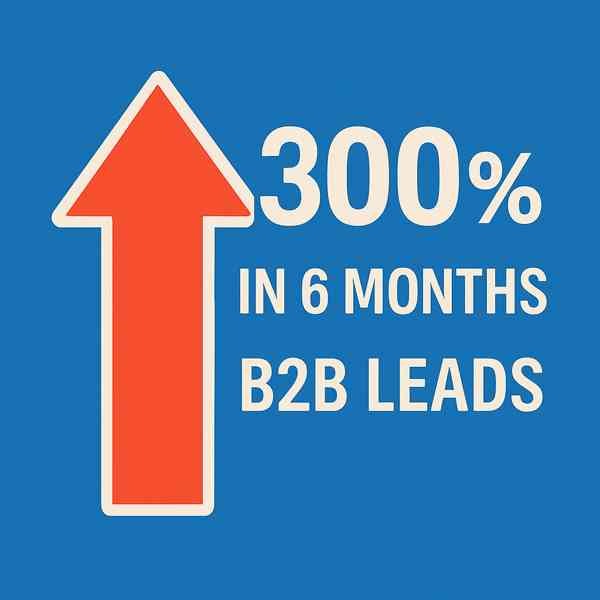Split Testing Your Cold Emails: A/B Test Ideas That Work
Cold emailing can help you reach potential customers. But how do you make sure your emails get noticed? This is where split testing, or A/B testing, comes in. A/B testing lets you try different versions of your emails. You can see which one works better. This article will explore ideas for testing your cold emails. We will look at what to test and how to improve your email responses.
What is Split Testing in Cold Emails?
![]()
Split testing is a method used to compare two versions of something. In cold emailing, it helps you find out which email gets more responses. Here are the basics:
- A/B testing involves sending two different versions of an email.
- You change one element in each version.
- After sending both emails, you check which one performed better.
- The goal is to increase open rates and responses.
- This method uses real data to make decisions.
- It helps you learn what works best for your audience.
For example, you might send one email with a blue subject line and another with a red subject line. By comparing the results, you can see which color grabs attention more. This process can lead to better email strategies over time.
Choosing What to Test in Your Emails
![]()
Deciding what to test is important. You want to focus on elements that can impact your results. Here are some key areas to consider:
- Subject Lines: Try different styles or lengths.
- Email Length: Test short versus long emails.
- Call to Action (CTA): Experiment with different phrases.
- Personalization: Use names versus generic greetings.
- Images: Include images in one and not the other.
- Timing: Send emails at different times of day.
By focusing on these elements, you can gather useful information. Each small change can lead to big differences in how people respond.
Creating Effective Subject Lines for Testing
![]()
Your subject line is the first thing people see. It can determine if they open your email or ignore it. Here are some tips for creating effective subject lines:
- Keep it Short: Aim for 6-10 words.
- Be Clear: Let them know what the email is about.
- Create Urgency: Use phrases like “limited time offer.”
- Ask Questions: Questions can spark curiosity.
- Use Numbers: Lists can be appealing (e.g., “5 Tips…”).
- Personalize: Add the recipient’s name if possible.
For instance, you could test “Get 20% Off Today!” against “Your Special 20% Discount Awaits!” This helps you see which message appeals more to your audience.
Testing Different Email Lengths for Engagement
![]()
The length of your email matters. Some readers prefer short emails, while others like detailed messages. Here’s how to approach this test:
- Short Emails: Focus on getting straight to the point.
- Long Emails: Provide detailed information and context.
- Engagement Rates: Track how many people respond to each length.
- Feedback: Ask recipients what they prefer.
- Analyze: Look for patterns in responses.
- Adjust: Use findings to shape future emails.
For example, send one email that is just a few sentences long. Then, send another that goes into detail about your product. See which version gets more replies.
Experimenting with Calls to Action (CTAs)
![]()
The call to action is what you want the reader to do next. It’s crucial for guiding them. Here are some tips for testing CTAs:
- Use Action Words: Start with verbs like “Join,” “Get,” or “Discover.”
- Test Button vs. Text Link: See which format gets more clicks.
- Change Colors: Bright colors can attract attention.
- Location Matters: Place your CTA at different spots in the email.
- Be Specific: Tell them exactly what will happen when they click.
- Measure Results: Check which CTA leads to more actions.
For example, compare “Click here to learn more” with “Sign up now for exclusive access!” This will show you which wording encourages action.
Understanding the Role of Personalization
![]()
Personalization can make your emails feel special. It shows that you care about the recipient. Here’s how to test personalization:
- Use Names: Address the recipient by their first name.
- Segment Your List: Group contacts based on interests.
- Customized Content: Tailor messages to specific groups.
- Track Engagement: Measure responses to personalized vs. generic emails.
- Evaluate Preferences: Find out if personalization matters to your audience.
- Refine Your Approach: Adjust based on feedback and results.
An example would be sending one email that says “Hi Sarah,” compared to one that says “Hello there!” You may find that using names increases engagement.
Analyzing Timing for Maximum Impact
![]()
The timing of your email can greatly influence its success. Sending emails at the right time can boost open rates. Here’s how to analyze timing:
- Weekdays vs. Weekends: Test emails sent on different days.
- Time of Day: Morning, afternoon, or evening—what works best?
- Holidays: Consider how holidays affect open rates.
- Frequency: Test sending emails weekly versus bi-weekly.
- Monitor Trends: Keep track of any changes in response rates.
- Adapt Strategy: Use findings to optimize future email schedules.
For instance, you could send one batch of emails on Monday morning and another on Friday afternoon. This helps reveal the best times to connect with your audience.
Summing Up: Key Takeaways on A/B Testing
![]()
In conclusion, A/B testing your cold emails is essential for improving your outreach. Here are the main points to remember:
- Split testing helps you understand what works best.
- Focus on key elements like subject lines, length, and CTAs.
- Personalization can significantly enhance engagement.
- Timing plays a critical role in email effectiveness.
- Use data to make informed decisions for future emails.
- Continually refine your approach based on test results.
With these tips, you can create effective cold emails that get better responses. Remember to keep testing and learning. Good luck with your email campaigns!




